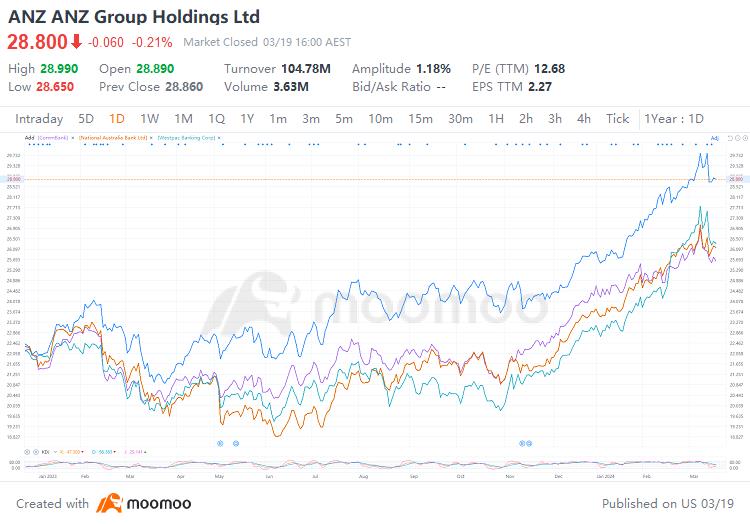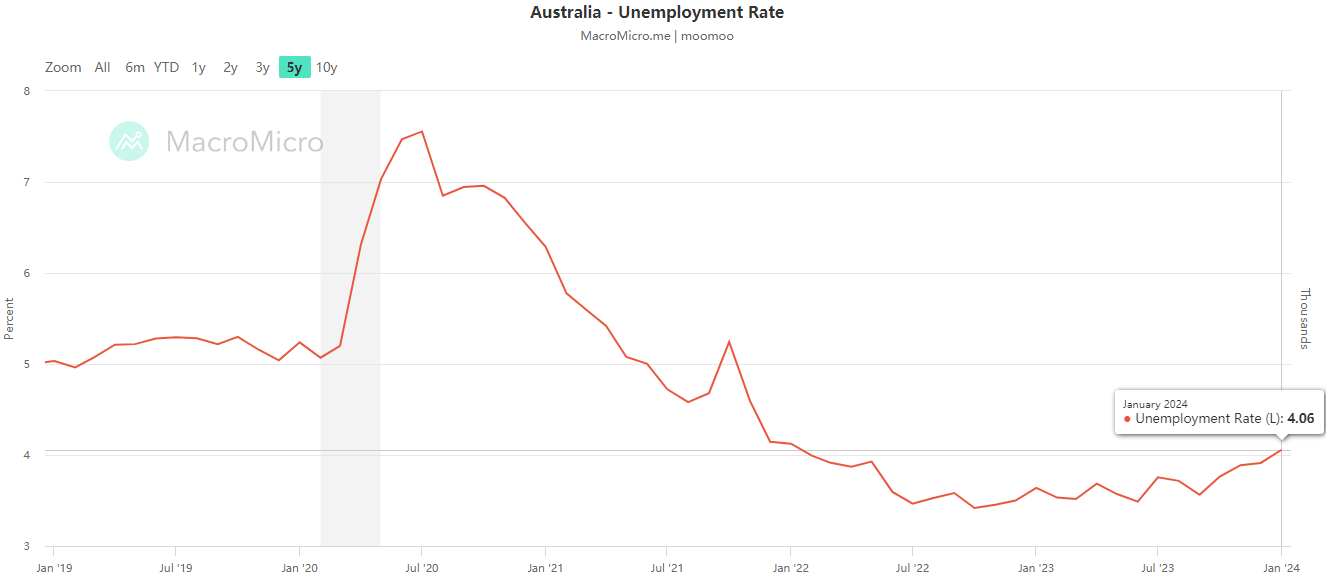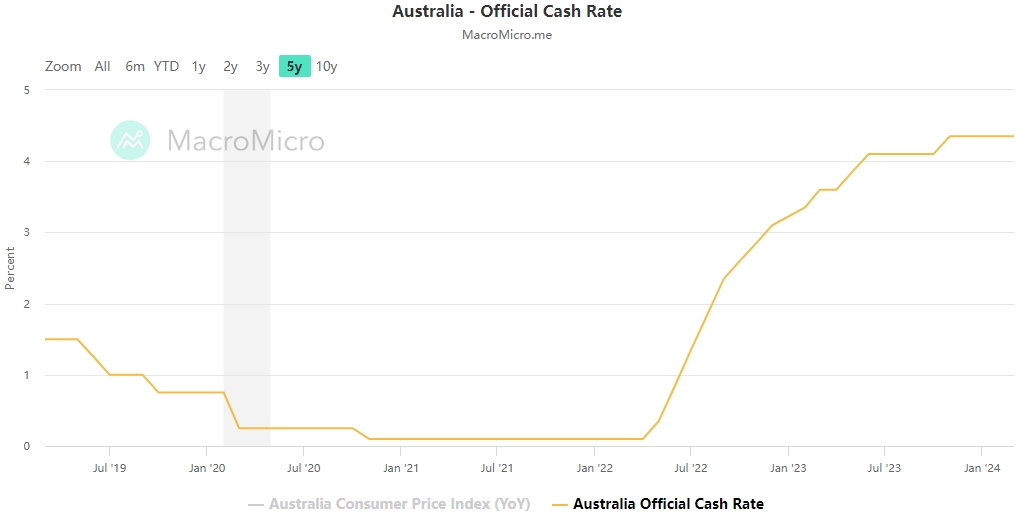Inside the Australian Banks Downgrades: What You Need to Know
Last week, Macquarie and UBS downgraded their ratings on the big four banks in Australia. UBS's preference among Aussie banks is: $ANZ Group Holdings Ltd(ANZ.AU$ and $Macquarie Group Ltd(MQG.AU$, which they rate as "Neutral", then the rest, which they rate as "Sell".
Macquarie expressed its bearish outlook on the big four Australian lenders, doubling down on its bearish view and advising clients to "underweight everything". In particular, the broker issued a double downgrade to Westpac, lowering its rating from "outperform" to "underperform". As a result of these reports, the bank stocks, which are significant components of the market, fell 3.17% duringlast week.
How have bank stocks performed over time?
As a matter of fact, the banking sector in the $S&P/ASX 200(.XJO.AU$ has been on fire over the past year, surging 22.64% and outpacing the index's return by nearly double. On March 8th, all fourbig banks - $ANZ Group Holdings Ltd(ANZ.AU$, $Westpac Banking Corp(WBC.AU$, $National Australia Bank Ltd(NAB.AU$, and $CommBank(CBA.AU$ - reached new highs, underscoring their dominance in the market.
Banking stocks performed notably well for several reasons, including: 1) Market participants are increasingly factoring in the possibility of a "soft-landing scenario". 2) The expected credit loss (ECL) due to the pandemic is likely to be lower than the initial projections. 3) There are indications of a reduction in competitive pressures on deposits and lending.

Why are analysts bearish about bank stocks now?
1. Expectation of Declining Profits
The banking industry is confronted with a major obstacle in the form of revenue growth constrains, prompted by intense competition to attract new borrowers in a price-sensitive market, commonly known as the "mortgage war", amid escalating deposit and funding expenses.
The banking industry is confronted with a major obstacle in the form of revenue growth constrains, prompted by intense competition to attract new borrowers in a price-sensitive market, commonly known as the "mortgage war", amid escalating deposit and funding expenses.
Furthermore, if interest rate cuts materialize as anticipated, which have been a significant contributor to soaring valuations in recent times, banks may find it challenging to counteract the pressures on margins associated with reduced rates.
Despite the Reserve Bank of Australia currently maintaining steady interest rates, the likelihood of further rate hikes seems low when considering the economic growth rate is at its weakest in 30 years and unemployment has rapidly increased in recent months.

Currently, consensus estimates suggest that the earnings of Australian banks are expected to decline by 8% in FY24 and 3% in FY25, according to UBS.
2. Rising Mortgage Delinquency Rates
The Reserve Bank of Australia lowered the cash rate to a record low of 0.1% to encourage borrowing during the pandemic. However, during the most extensive rate hiking cycle, the rates were raised to 4.35%. This resulted in a rise in mortgage re-servicing costs for new borrowers, who had taken advantage of the low rates to purchase properties.
The Reserve Bank of Australia lowered the cash rate to a record low of 0.1% to encourage borrowing during the pandemic. However, during the most extensive rate hiking cycle, the rates were raised to 4.35%. This resulted in a rise in mortgage re-servicing costs for new borrowers, who had taken advantage of the low rates to purchase properties.

According to a recent report by Moody's Investors Service, the number of borrowers who fell 30 days or more behind on their mortgages increased from 1.05% to 1.62% last year. Additionally, since the RBA began its rate hikes in May 2022, mortgage repayments have risen by 44%, compared to only a 7% increase in average weekly earnings during the same period. The report said,
Arrears rates will continue to rise this year, given that increases in mortgage repayment costs have significantly outpaced income growth.
3. Trading at Peak Multiples
According to UBS, based on the consensus estimates, the PE multiples among the banks have grown from 13.2 times earnings to 16.1 times earnings on a two-year forward basis. The institution believes that current market pricing indicates that investors have become "overly optimistic" about the prospects of local banking stocks, resulting in the broker recommending an "underweight" position in the sector to clients.
Although the earnings quality may be better, Schellbach, the UBS analyst, does not believe that we are on the cusp of a multi-year bull market, including for ASX 200 bank shares. In his opinion:
Bank PEs were under 8 times in early 1995 versus 16 times now. The reality is that the current rate hiking cycle never saw equities de-rate anywhere near to the extent which they did in 1994.
Macquarie suggests banks are expensive in absolute and relative terms. Analysts argued that these banks were trading at peak multiples without any clear fundamental justification.
Source: The West Australian, Market Index, Macquarie, UBS, The Australian, FNArena, Macromicro
By Moomoo News Marina
Disclaimer: Moomoo Technologies Inc. is providing this content for information and educational use only.
Read more
Comment
Sign in to post a comment

151160998 jm : I'm find thank you so much
EvanderAU : Like it's not an inside job?
Lysander :![undefined [undefined]](https://static.moomoo.com/nnq/emoji/static/image/default/default-black.png?imageMogr2/thumbnail/36x36)
![undefined [undefined]](https://static.moomoo.com/nnq/emoji/static/image/default/default-black.png?imageMogr2/thumbnail/36x36)
![undefined [undefined]](https://static.moomoo.com/nnq/emoji/static/image/default/default-black.png?imageMogr2/thumbnail/36x36)
Peterson111 :![undefined [undefined]](https://static.moomoo.com/nnq/emoji/static/image/default/default-black.png?imageMogr2/thumbnail/36x36)
![undefined [undefined]](https://static.moomoo.com/nnq/emoji/static/image/default/default-black.png?imageMogr2/thumbnail/36x36)
![undefined [undefined]](https://static.moomoo.com/nnq/emoji/static/image/default/default-black.png?imageMogr2/thumbnail/36x36)
Liam Mitchell : That's not quite what I understood.